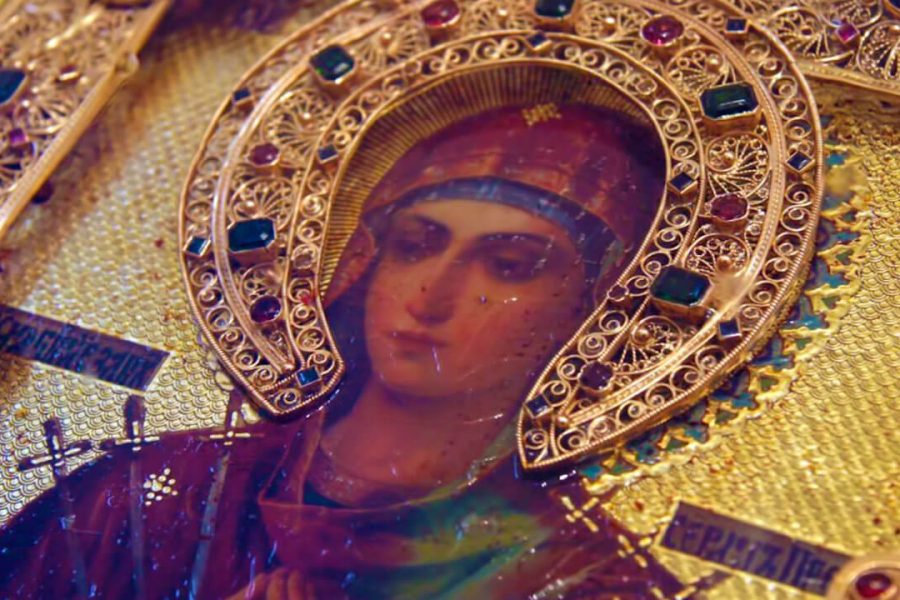Throughout the history of slavery, rebellions were usually brutally suppressed to set an example for others. Despite this, rebellions were common in slave societies since the time of ancient Rome and Persia.
10. Stono Rebellion
The Stono Rebellion of 1739 was the largest slave rebellion in the Southern Colonies, a union of British-controlled territories in North America at the time. Beginning on September 9, 1739, it involved a number of slaves working on plantations near the Stono River in South Carolina. They may have intended to march toward St. Augustine, Spain, where Spain was offering freedom and property to any escaped slaves from British territories.
It was a brutal rebellion, as the rebels killed everyone in their path except one innkeeper. However, it did not last long, as the rebellion was suppressed by white militia and plantation owners on horseback within a few hours. By the end of it, up to a hundred rebels had been killed, and during the march, more than 20 white residents.
9. Jij Rebellion
By the early 19th century, slavery made up a large part of the economy of the Cape Colony, a rapidly developing region in southern Africa under British rule. Although there had always been some resistance among the enslaved population, the 1808 rebellion, also called the Jij Rebellion, was one of the first organized slave revolts in the colony.
It involved some 340 slaves, mostly from the fertile and productive grain farms of the Swartland and Koeberg. The effort was largely non-violent, as the gangs seized a number of farms, imprisoned slave-owning families, and freed the slaves. They intended to march on Cape Town and, in their own words, “raise the bloody flag and be free.”
Although they were successful for a time, the rebellion did not last long. It was suppressed within 36 hours, with all of its main leaders sentenced to death or imprisoned. It failed to achieve its larger goals, although the 1808 rebellion helped to strengthen revolutionary voices in the Cape Colony, which eventually led to the complete abolition of slavery in the 1830s.
8. The Amistad Rebellion
The Amistad Mutiny of 1939 occurred on the Amistad ship en route from Havana to Puerto Principe, Cuba. It was carrying 53 recently kidnapped and sold slaves, most of whom took part in the mutiny. Almost the entire crew of the ship died in the uprising, except for a few people essential to the return home, such as the navigator.
But instead of sailing to Africa as the rebels demanded, the Spanish navigator continued north, ending up in New London, Connecticut, where the rebels were imprisoned. While Spain demanded that the slaves be returned to their rightful owners, the matter was not so clear-cut in the United States, where the debate over abolition was just heating up.
In a widely publicized ruling, the Supreme Court ruled that the defendants had been illegally kidnapped and had exercised their right to escape. All 35 surviving captives were released and sent home to Sierra Leone, thanks to donations from local abolitionists and other private organizations.
7. Gabriel's Conspiracy
The Gabriel Conspiracy was a highly ambitious slave rebellion planned in Virginia at the turn of the 19th century. If successful, it would have been the largest slave rebellion in U.S. history, likely resulting in the liberation of hundreds of slaves in one of the largest slave states at the time. Organized by Gabriel, an enslaved blacksmith working in and around Richmond, the plan involved slaves from at least eleven Virginia counties, including Norfolk, Charlottesville, Caroline, and Louisa.
According to the plan, Gabriel's army was to move out on August 30, 1800, to seize Capitol Square in Richmond, raid the armory, and kidnap the governor, along with parallel uprisings in Petersburg and Norfolk. It was a good plan, and it probably would have worked, too, if not for a severe thunderstorm that hit the city on the very day of the uprising. Since some of the planned routes were impassable due to rising waters, they were postponed until the following day.
Before they could do so, however, two slaves in separate locations became nervous and told their masters. Although they were eventually freed, the information led to a statewide pursuit of the rebels. By the end of it, 26 people, including Gabriel, had been hanged for their part in the plot.
6. The Zanj Rebellion
The Zanj Revolt is often cited as one of the most brutal and protracted rebellions of the early Islamic era. For 15 years, beginning in 869, the armies of the Abbasid Caliphate waged bitter battles against East African slaves, also called Zanj, from the marshes of southern Iraq and southern Iran. Led by a man of mysterious origins—Ali ibn Muhammad—the rebel forces successfully repelled the caliph’s attacks for years, even establishing their own state deep in the marshes called al-Mukhtara.
Although exact numbers are unknown, thousands of rebels fought in the years-long civil war, which had a devastating effect on the economy of the Basra region and its surrounding areas. Thousands of people lost their homes and livelihoods as rebels systematically destroyed agricultural lands belonging to landowners. At one point, even major cities such as Basra and Wasit were looted, forcing much of the population to flee.
Ultimately, the rebels were defeated, although the caliph paid a heavy price. The destruction caused by the Zanj rebellion led to the rise of several regional dynasties, greatly weakening the influence of the Abbasid Caliphate in the region and limiting its power to its capital.
5. The Rise of Nat Turner

The Southampton Rebellion, also called the Nat Turner Rebellion after its leader, began on the evening of August 21, 1831. It was one of the most daring slave rebellions in U.S. history, as well as one of the most violent. In one day, Turner and his roughly 50 followers marched through Southampton County and killed at least 55 people. They hoped to move on to the nearest city, Jerusalem, where they could obtain weapons and men to continue the rebellion.
Due to the rebels' lack of organization and planning, the uprising was quickly crushed by local militias. More than three dozen rebels were killed as punishment, although Nat Turner himself evaded capture for two months. The rebellion led to even stricter laws for Virginia's enslaved population, which greatly limited their education and movement until the American Civil War.
4. The Rebellion of Gaspar Yanga
In 1570, an African slave named Gaspar Yanga led a revolt of hundreds of enslaved Africans in east-central Mexico, then called New Spain. After killing 23 people, the gang headed to the foothills of the Veracruz Mountains, where they founded a small town — or Palenque — to live on their own.
The experiment worked, too, at least for a time. For about 30 years, the colony waged guerrilla warfare against Spanish troops and raided Spanish caravans, while also growing its own food and living sustainably off-world. Over time, anyone from the vast colony scattered across the Veracruz region came to be called a yangiko.
Despite its military superiority, Spain was never able to defeat the former slaves. The conflict ended with a peace treaty with Yanga, which created the first colony of free slaves in North America.
3. Uprising on the coast of Germany
The 1811 uprising in what is now Louisiana was the largest slave revolt in U.S. history. Beginning on January 8 on a plantation on the German Coast—a region along the west bank of the Mississippi River populated largely by German immigrants—the rebellion would soon involve more than 500 enslaved people marching on New Orleans.
Unfortunately for them, the rebels were barely trained to carry out a sustained uprising. They were also poorly armed, especially compared to the well-armed militias hired by plantation owners and federal government forces in New Orleans. The rebellion was crushed by the morning of January 10, and many slaves were killed during the fighting or summarily executed shortly thereafter. To set an example and discourage other similar attempts, authorities decapitated many of the bodies and placed their heads on poles across New Orleans and along the Mississippi River.
2. Baptist War
The Baptist War, also known as the Christmas Rebellion, was the largest slave rebellion in the British Caribbean. Although figures are disputed, between 20,000 and 300,000 slaves from the colony of Jamaica took part in the rebellion, which began on December 25, 1831. For about eleven days, rebels around St. James Parish and nearby rural areas refused to work as slaves and demanded full emancipation, even sometimes attacking the property of white landowners to meet their demands.
The rebellion was eventually suppressed by British counter-insurgency forces and local militias. Around 200 rebels were killed during the fighting, and more than 340 were later tried and executed. Although the rebellion failed to achieve its goals, it had a major impact on the parliamentary debate over slavery in Britain, which eventually led to the Emancipation Act of 1933.
1. Haitian Revolution

The Haitian Revolution remains the only slave rebellion in history to form its own state. Known as Saint-Domingue under French rule, it was one of the most profitable colonies in the world at the time, accounting for nearly two-thirds of France's total foreign trade. Beginning with an organized slave rebellion in August 1791, the revolution took another twelve years to fully materialize, eventually leading to the establishment of the independent republic of Haiti.
Although the conflict was limited to Haiti, it involved many other actors pursuing their own interests in the region, including Spain and England. By even the most conservative estimates, more than 350,000 people died in the brutal conflict between France and the temporary alliances of other colonial powers with Haitian slaves.
At the turn of the century, many parts of Saint-Domingue were under the control of former slaves. While Napoleon Bonaparte made a last-ditch attempt to retake the colony by sending an invasion force, it was defeated by rebel leaders such as Jean-Jacques Dessalines, who later became the first ruler of the new republic. The conflict officially ended with the Haitian Declaration of Independence on January 1, 1804, which abolished slavery and granted equal rights to all its citizens.













Оставить Комментарий